How Does Machine Learning Work? A Complete Beginner’s Guide 2025
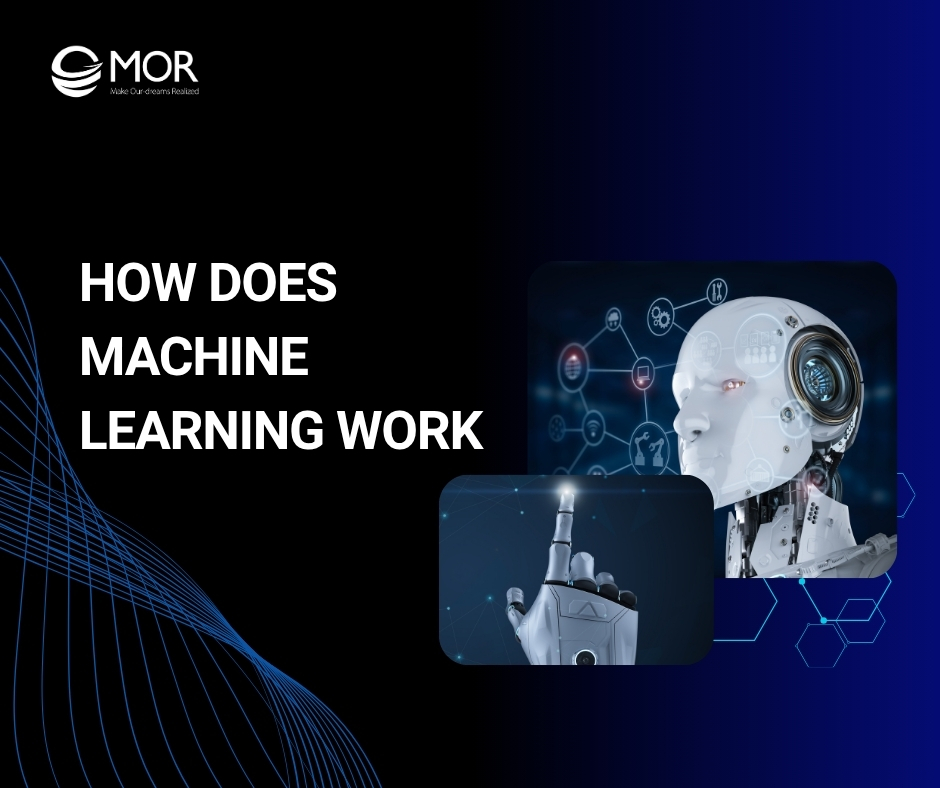
How does machine learning work, and why is it showing up in everything from search engines to self-driving cars? With businesses racing to apply AI in real-world use cases, understanding the basics has never been more important. This guide of MOR Software will break down how machine learning works, explain the key steps behind the process, and show how companies can apply it to solve real problems.
What Is Machine Learning?
Machine learning is a method where computers learn to spot patterns and make decisions without being told exactly what to do for every case. Rather than following hard-coded instructions, the system looks at data, learns from it, and adjusts how it works over time.
This ability to adapt makes machine learning a key part of modern software. It's how computers now handle complex jobs like recognizing faces in photos, translating speech to text, or spotting suspicious banking activity. Adoption is now mainstream. In 2024, 78% of organizations said they used AI automation in at least one business function.
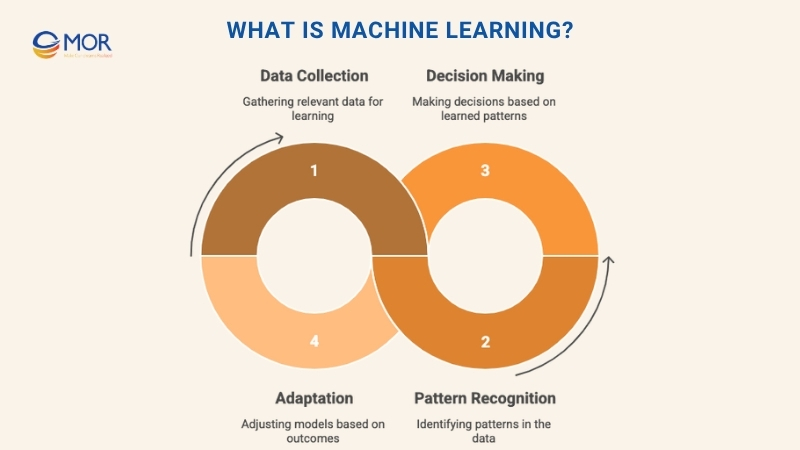
If you’ve ever wondered how does machine learning work, it all starts with that ability to learn from data instead of fixed rules.
While it might sound new, this concept goes way back. In 1959, Arthur Samuel, a computer science pioneer, described it as “the field of study that gives computers the ability to learn without being explicitly programmed.” That’s another way of saying these systems use data to figure things out on their own.
Later, Herbert Simon, one of the early leaders in artificial intelligence, echoed this view. He explained that computers, just like people, improve by doing, learning from experience to get better results. That's the core of machine learning.
Key Concepts Of Machine Learning
To understand how does machine learning work, you first need to get familiar with its main learning types: supervised, unsupervised, semi-supervised, and reinforcement learning. Each approach trains models in a different way.
- Supervised Learning: The model learns from a dataset where both inputs and correct outputs are already known. Think of it like teaching with answer keys, perfect for tasks like email spam detection or credit scoring.
- Unsupervised Learning: No labels here. The system explores the data and groups it based on patterns it discovers. This is useful for tasks like customer segmentation or anomaly detection. Do you know the key differences between supervised vs unsupervised learning? Which is better? Let's explore right now!
- Semi-supervised Learning: A mix of both. The model trains on a dataset where some entries are labeled, and the rest are not. It’s commonly used when labeling data is expensive or time-consuming.
- Reinforcement Learning: Here, an agent learns by trial and error. It interacts with its environment, takes actions, and gets rewarded or penalized. Over time, it learns what works best. A popular use case? Training AI to play video games.
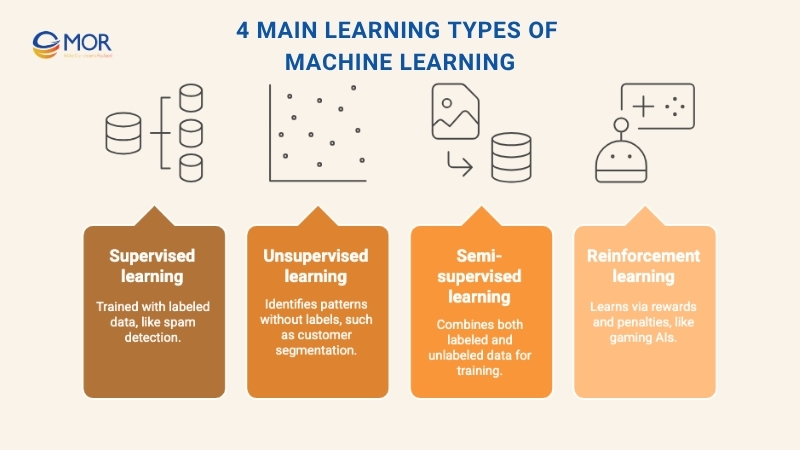
Now let’s break down the basic elements of machine learning through a simple example: predicting house prices using inputs like the number of bedrooms or square footage.
- Algorithms: These are the rules or logic the model follows to learn from data. In ml explained, machine learning algorithms like decision trees or linear regression help uncover patterns.
- Models: A model is what we get after applying an algorithm to data. It's the system that makes predictions based on what it has learned.
- Training: This step tunes the model by feeding it data with known outcomes. The goal is to minimize errors between predicted and real values.
- Testing: After training, we check how well the model performs using a new set of data. Metrics like mean squared error tell us if the model is accurate, or way off. Getting the data right matters. Gartner estimates poor data quality costs organizations at least 12.9 million dollars per year on average.
These key ideas form the foundation of machine learning: how does it work in real-world settings.
How Does Machine Learning Work?
To answer the question how does machine learning work, we need to walk through its five essential steps. Each part of the pipeline contributes to the model's ability to learn, predict, and deliver real-world results. Skipping any step can compromise performance. The typical machine learning workflow looks like this:
- Data Collection
- Data Preprocessing
- Model Training
- Model Evaluation
- Model Deployment
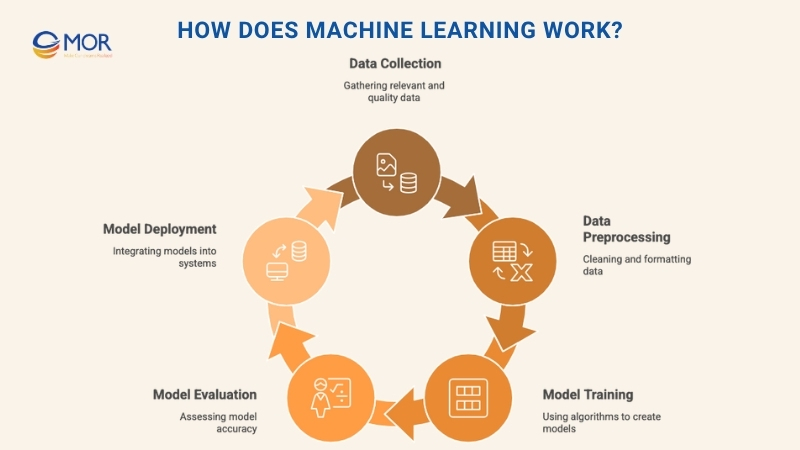
Data Collection
Everything starts with data. The quality, quantity, and relevance of the data play a big role in your model's success. Datasets can come from APIs, websites, CRM tools, social media, or internal company systems. If you’re practicing, you can use preloaded information sets used in machine learning libraries like scikit-learn or pandas.
While collecting data, always consider ethical concerns. Responsible use means respecting privacy and fairness, especially if your application touches sensitive areas like health, finance, or hiring.
A strong data foundation is the first step in answering how does machine learning work.
Data Preprocessing
Once data is in hand, we prepare it. This step includes cleaning missing values, removing duplicates, handling outliers, and standardizing data formats. Poor-quality input leads to garbage output, so this is a make-or-break stage.
Preprocessing increases prediction accuracy and smooths out issues that might confuse the model later. In short, clean data is smart data.
Model Training
Now comes the core of the process. Based on the problem, classification, regression, etc., you choose an algorithm and train your model. You’ll often split your dataset into a training set and a test set.
Algorithms like linear regression, logistic regression, and decision trees are popular choices depending on the use case. You can also tweak the model through hyperparameter tuning. Tools like grid search or random search help find the best settings to improve performance.
Model Evaluation
Before putting a model into action, you need to measure how well it performs. That’s where evaluation metrics come in. Depending on your task, you might look at accuracy, precision, recall, F1-score, or AUC.
You can also apply cross-validation methods like k-fold or leave-one-out to get a more reliable measure of how your model handles different data subsets. If results don’t meet expectations, this is the time to go back and fine-tune.
Model Deployment
Now that your model works, it's time to apply it to the real world. Deployment means integrating your trained model into a product or system so it can start making predictions and adding value.
This is the final step where how does AI and machine learning work becomes real for users, whether it’s a recommendation engine, chatbot, or fraud detection system.
On top of these steps, visualizing your results can reveal important insights. Charts like feature importance plots help you understand which variables influence predictions the most. That insight can guide future improvements in both model training and feature engineering.
This hands-on flow explains not only machine learning: how does it work, but also how it becomes usable and valuable.
Example Of How Does Machine Learning Work
Machine learning is a branch of AI where computers learn from data, much like humans learn from experience. But instead of coding every instruction, we feed the system examples. Over time, it improves how it makes predictions or decisions.
This learning process happens through repetition. The more data the system sees, the better it gets at spotting patterns and adjusting its output.

You’re already using machine learning every day. It filters spam from your inbox, powers search engines, recommends songs on Spotify, flags suspicious banking activity, and helps your phone camera recognize faces.
So, if you're wondering how does machine learning work, this cat v. dog classifier is one of great machine learning examples to visualize the process from raw data to smart predictions
Collect the Data
Start with gathering examples. In this case, we’re collecting data on two key traits that help tell cats and dogs apart:
- Ear shape
- Nose size (compared to head size)

These features come from a dataset of 100,000 labeled photos.
Prepare the Data
Next, we clean the dataset. That means removing duplicates, fixing errors, and shuffling the order to avoid bias during learning. Then, we split it into two parts:
- Around 80% for training
- Around 20% for evaluation
Each training image is labeled as either a cat or a dog. This helps the model compare its predictions to the correct answers and improve over time. This setup is called supervised learning.
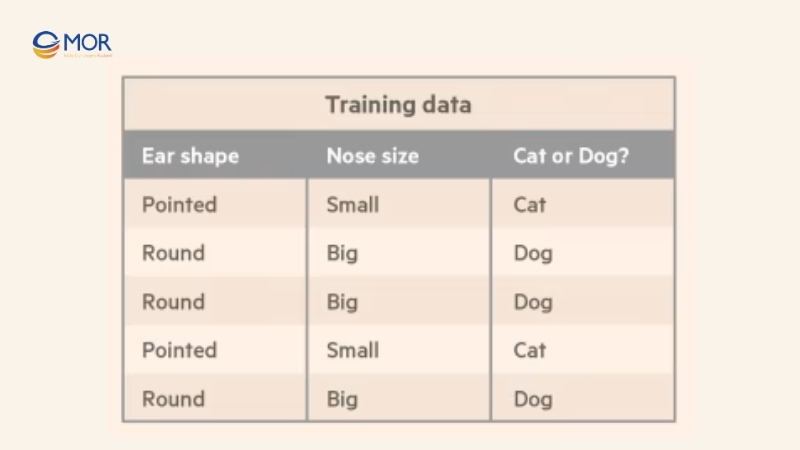
Data visualization helps spot patterns between features and checks for any imbalances that could skew results.
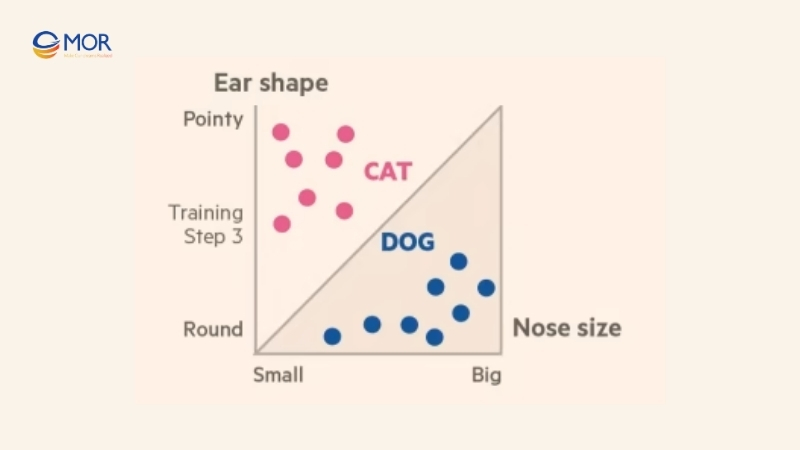
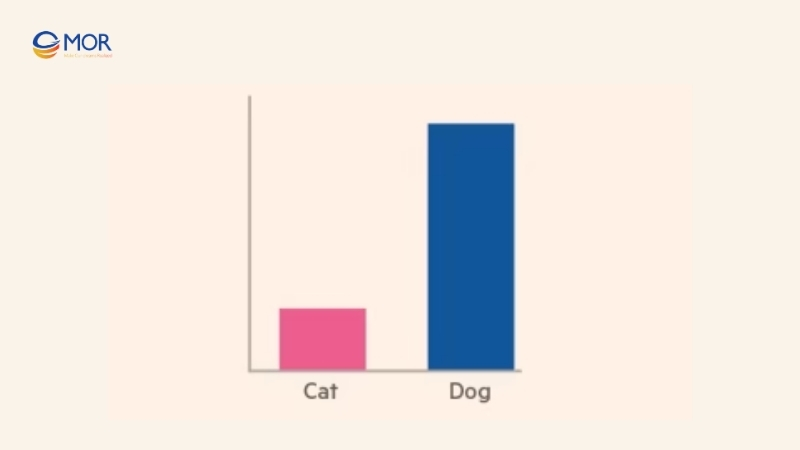
For example, if the dataset has way more dog photos than cat photos, the model may lean heavily toward predicting "Dog", simply because that answer appears more often.
Choose a Model
Since the task only involves two features, ear shape and nose size, a simple linear model is enough. This type of model can map those inputs to an output: cat or dog.
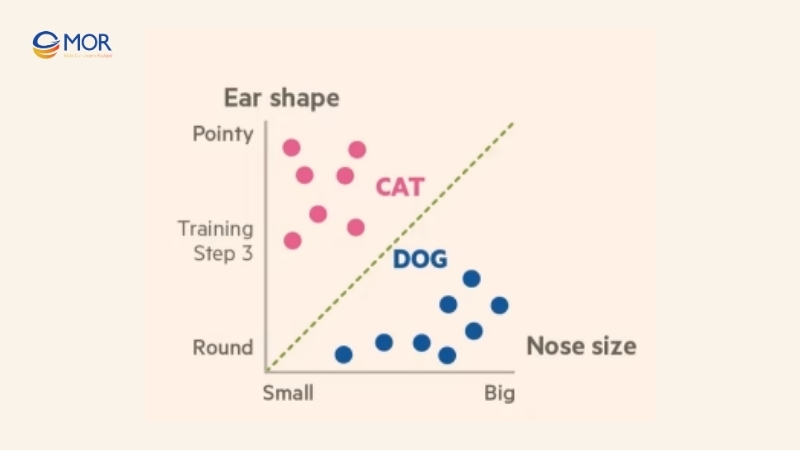
Train the Model
Training begins by assigning random weights and biases to the input data. These are used to make initial predictions, which are usually off the mark.
The model then compares its guesses to the actual answers. Based on the errors, it adjusts the weights and biases to improve accuracy.
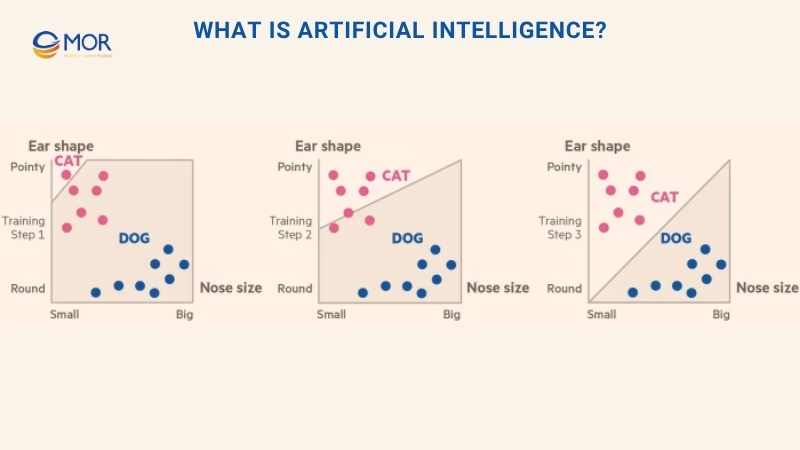
This cycle repeats over and over. Each round of updates is called a training “step,” and with every step, the model gets better at making the right call.
Evaluate the Model
Next, the model is tested on the evaluation dataset, the portion of data it hasn’t seen before. By comparing its predictions to the actual labels, we can measure how well it performs with new, unseen data.
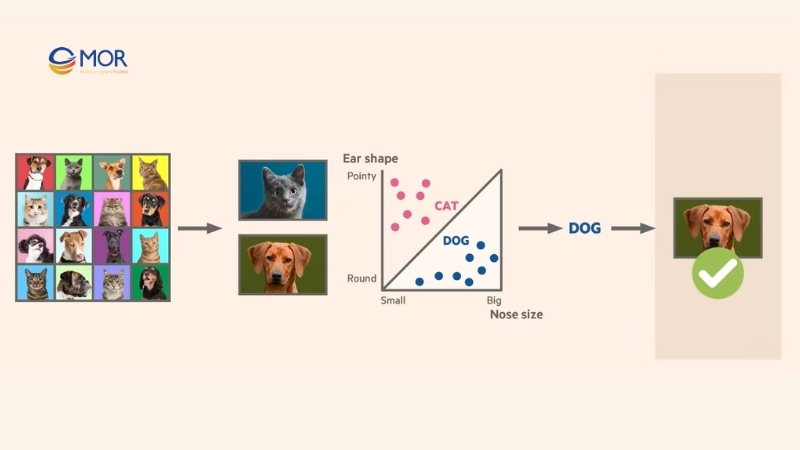
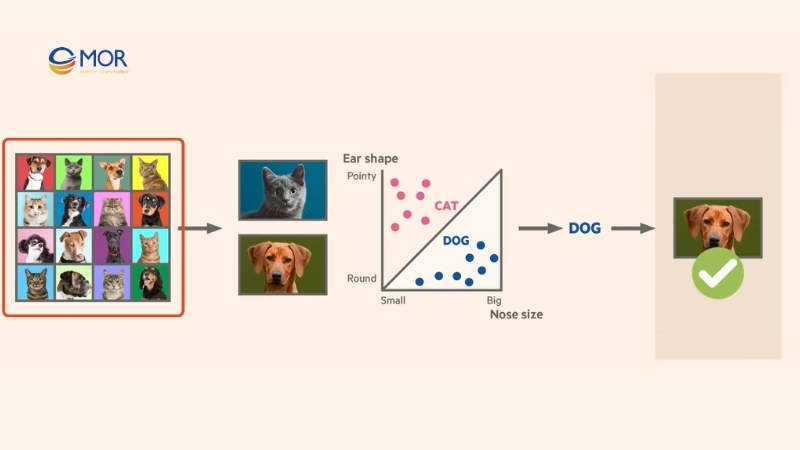
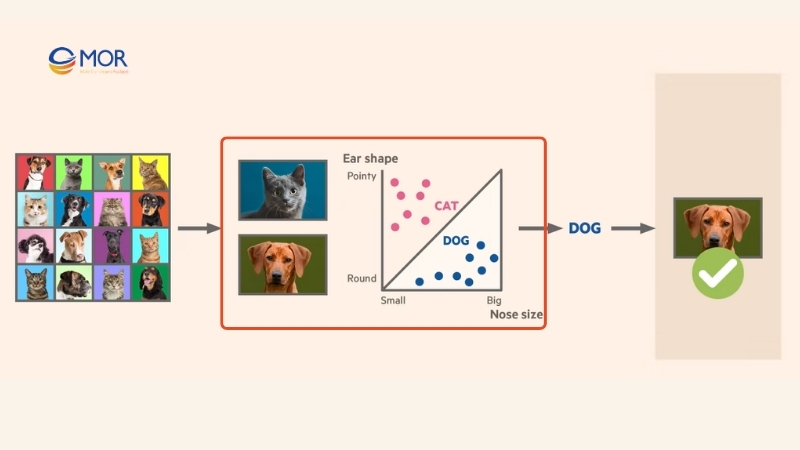
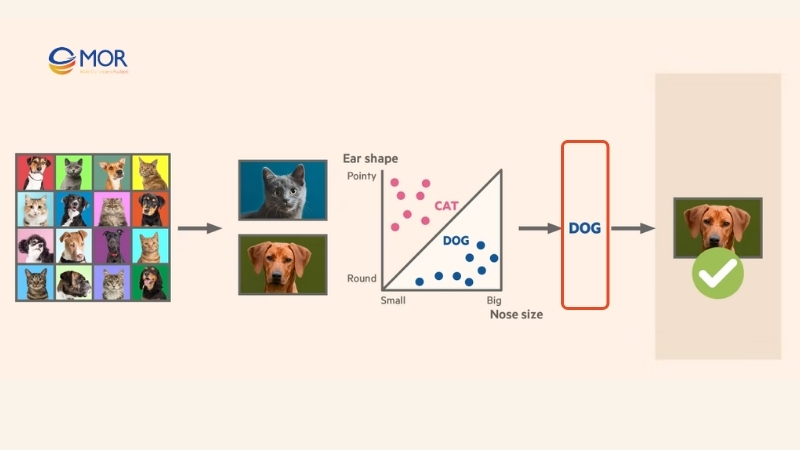

Tune the Parameters
To push performance even further, we adjust training settings. This might include how many training rounds to run or how much the model updates itself during each step. Fine-tuning these values helps boost accuracy.
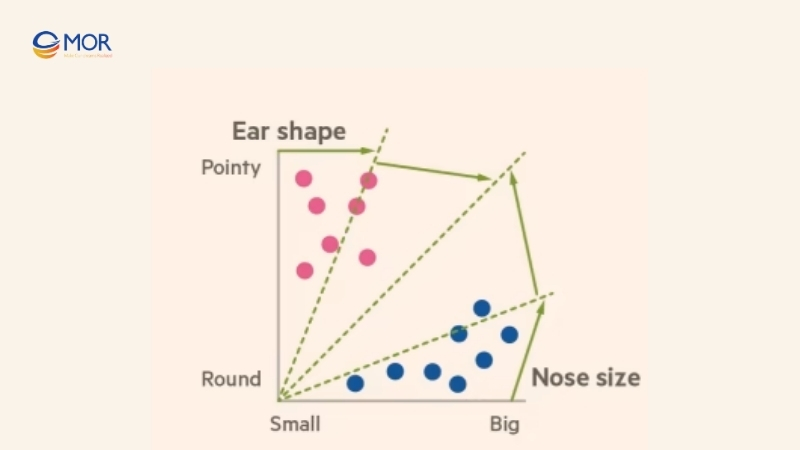
Use the Model to Make Predictions
Once training is complete and the model performs well, it’s ready to go. Now it can take new inputs and predict the correct outputs, all without needing explicit instructions. It has learned from data alone.
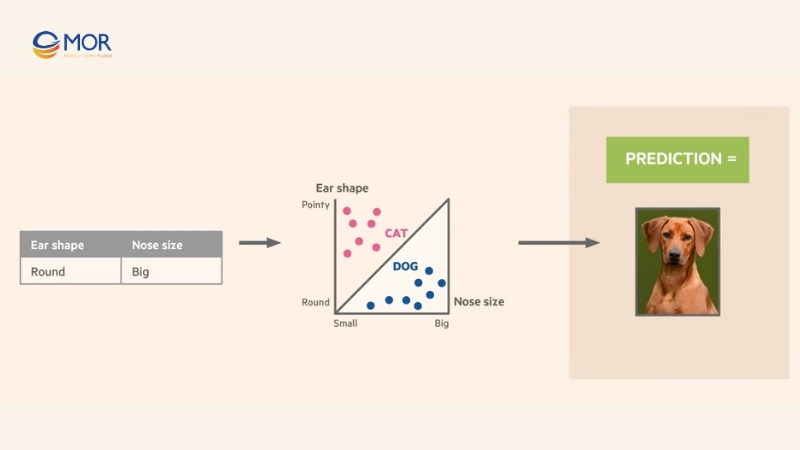
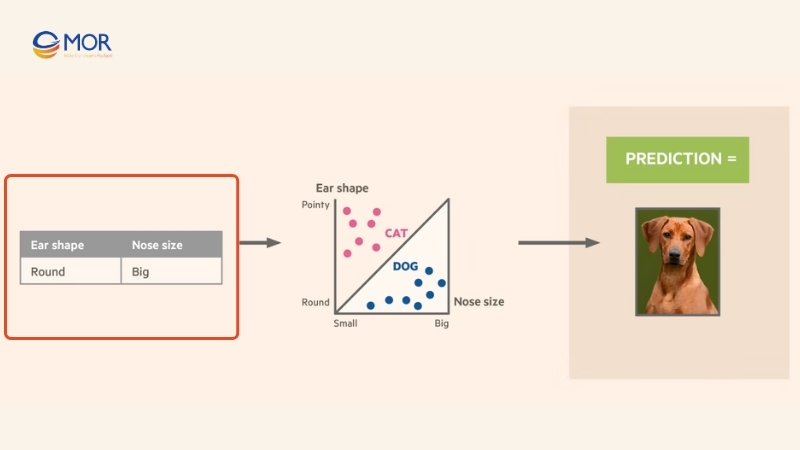
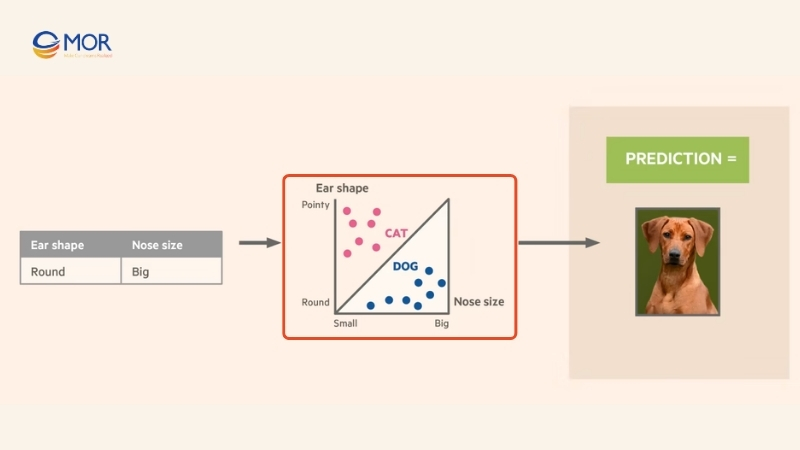

This cat vs dog example shows each stage of the machine learning process in action, from data collection to model deployment. It’s a simple but powerful way to answer the question: how does machine learning work.
How Do Businesses Apply Machine Learning To Solve Problems?
Many companies are putting machine learning at the center of how they operate. For example, Netflix relies on it to recommend shows, while Google uses it to power search results. In these cases, the tech isn’t just helpful, it is the product.
Other businesses, even if not built around AI, still apply machine learning to work smarter behind the scenes.
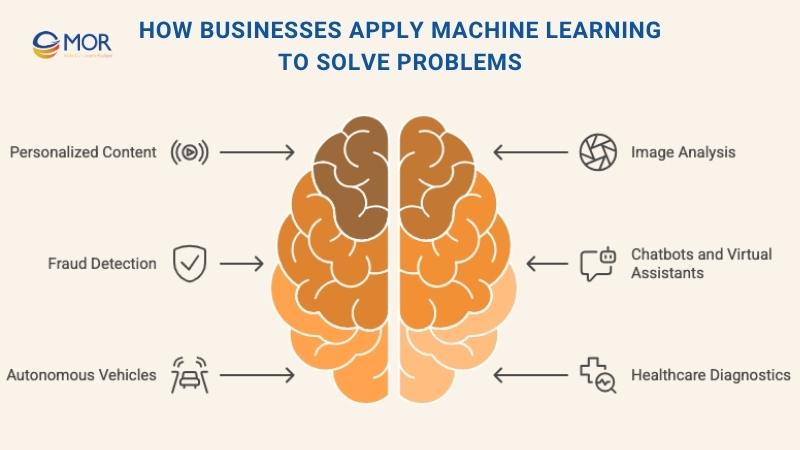
Some are still figuring things out. As MIT researcher Shulman put it, one of the toughest questions is: “What problems can I actually solve with machine learning?” The tech is powerful, but not every use case is obvious.
Back in 2018, MIT’s Initiative on the Digital Economy developed a 21-question guide to help businesses decide if a task is right for automation through machine learning. Their key takeaway?
Nearly every job has parts that machines can handle, but no job is fully replaceable. The smartest path is to break work into smaller tasks, then delegate some to machines and keep others with people.
So, where is machine learning already being used in real business environments?
- Product and content recommendations: Think Netflix, YouTube, Amazon, or even your Instagram feed. These platforms track behavior and use models to suggest what you’ll likely click next. They're always adjusting based on what you watch, scroll, or skip.
- Image analysis: From security systems to marketing, companies use machine learning to scan and classify images. In finance, hedge funds have even tracked car counts in store parking lots to estimate business performance.
- Fraud detection: By recognizing normal user patterns, systems can flag suspicious credit card activity, odd login attempts, or shady emails before they become a problem. Mastercard reports that its AI systems analyze nearly 160 billion transactions a year, assigning a risk score in about 50 milliseconds for each one.
- Chatbots and virtual assistants: Customer support is faster (and cheaper) thanks to bots trained with past conversation data. These bots understand common questions and improve with every interaction.
- Autonomous vehicles: Self-driving cars rely on deep machine learning, a more advanced form of machine learning, to interpret their surroundings and make split-second decisions on the road.
- Healthcare diagnostics: Tools trained on medical images can help doctors detect issues like tumors or early signs of cancer. A 2025 meta analysis of 83 studies found generative AI achieved 52.1% diagnostic accuracy on average, comparable to non expert physicians, but still below experts.
No matter the industry, the answer to how does machine learning work is increasingly shaping what business looks like in practice, from backend automation to customer experience.
Challenges And Ethical Considerations in Machine Learning
Using machine learning comes with big responsibilities, especially when it affects real people. From data collection to model deployment, there are several issues that need to be addressed to build systems that are fair, safe, and trustworthy. Fraud shows the stakes. In the UK alone, 2024 saw about £1.17 billion stolen and 3.31 million confirmed fraud cases.
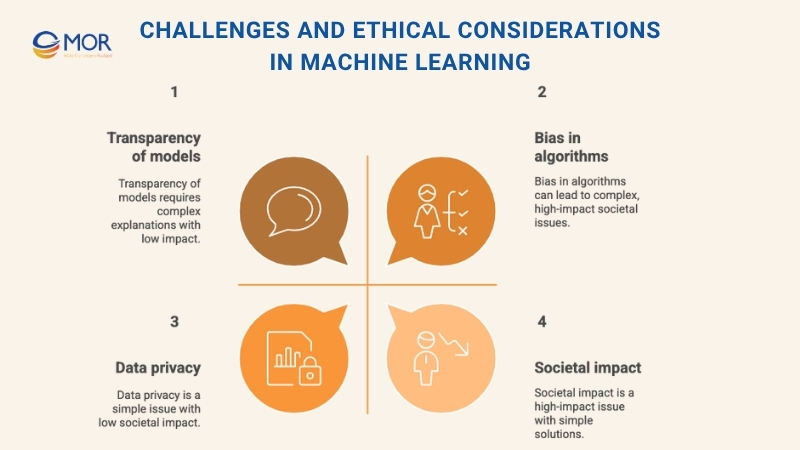
- Privacy Concerns: Models often rely on sensitive data. Whether it’s medical records, user behavior, or financial information, this data must be handled carefully. Privacy protection isn’t optional, it’s a must.
- Bias in Data and Algorithms: If your training data is skewed, your model’s predictions will be too. That can lead to unfair outcomes, especially in areas like hiring, lending, or law enforcement. Using balanced, diverse datasets helps reduce this risk. So does regular testing for bias.
- Interpretability and Transparency: Black-box models are tough to trust. Teams need to make their processes and predictions understandable, especially when decisions affect people’s lives. Clear documentation and explainable outputs make a big difference.
- Societal Impact: Machine learning can drive progress, but it also raises concerns. Automation may lead to job loss, and misuse of personal data can cause serious harm. Companies must weigh both sides when rolling out AI solutions.
To build responsibly, developers should apply privacy-first techniques like encryption and anonymization. They should also test models on a range of inputs to avoid one-sided results. In short, solving the question of how does machine learning work isn’t just about performance, it’s about doing the right thing.
How MOR Software Helps Businesses Apply Machine Learning
MOR Software supports companies in turning data into action through practical AI automation services. We help identify the right use cases, design the models, and deploy them into your existing systems, without disrupting operations.
From automating tasks like fraud detection to building smarter recommendation engines, our team has experience across sectors including retail, healthcare, finance, and manufacturing.
We use proven tools like Python, TensorFlow, and cloud platforms such as AWS and Azure. But more than just technical skills, we bring a product mindset, focusing on business value, speed, and long-term scalability. Every model we build is designed to be measurable, interpretable, and aligned with your goals.
Whether you’re starting with basic predictive analytics or moving into full-scale AI systems service, MOR Software offers the guidance and engineering expertise to make it work. We don’t just deliver code. We help you build a smarter business.
Conclusion
Understanding how does machine learning work isn’t just for data scientists anymore. As the technology continues to shape how businesses operate, leaders need to grasp its core steps, from collecting data to deploying real-world models. At MOR Software, we help businesses turn machine learning from a buzzword into a working solution. If you're ready to explore how this technology can support your goals, contact us today.
MOR SOFTWARE
Frequently Asked Questions (FAQs)
How does machine learning work step by step?
Machine learning typically follows five key steps.
- First is data collection, where relevant information is gathered.
- Next is data cleaning, which removes errors or inconsistencies.
- The third step is model training, where algorithms learn from the cleaned data.
- After that, the model is tested to evaluate its accuracy.
- Finally, the model is deployed so it can be used in real-world applications.
How does on-device machine learning work?
On-device machine learning runs directly on the device itself, without needing to connect to external servers. This allows models to use local data, respond quickly, protect user privacy, and work even when offline. It’s commonly used for personalized features on phones and smart devices.
Can I learn ML in 1 month?
Not really. Learning the basics of machine learning in one month is challenging. Most learners need at least several months to become comfortable with the key concepts, coding skills like Python or R, and working with data tools and algorithms.
What are the 7 stages of machine learning?
The process includes seven stages:
- Gathering and preparing data
- Engineering and selecting features
- Choosing the model type and structure
- Training and validating the model, testing for performance
- Deploying it into production
- Monitoring and maintaining it over time
How does machine learning actually learn?
Machine learning systems learn by analyzing large amounts of data. They detect patterns, adjust their internal settings during training, and aim to improve their predictions or decisions based on feedback or error rates from testing.
How much math do you need for ML?
To understand how machine learning works, you need to know calculus, linear algebra, probability, and statistics. These math skills help explain how models are built, trained, and optimized.
How do you explain machine learning?
Machine learning is a type of AI that lets computers learn from data and improve their performance without being explicitly programmed. It identifies patterns and uses them to make predictions or decisions with limited human input.
Is ML easier than AI?
No. Machine learning (ML) is often seen as a subset of artificial intelligence (AI), so in some ways, it's more focused and practical to learn. AI is a broader field that includes not only ML but also areas like robotics, expert systems, and natural language processing. Because of its scope, AI can be more complex overall. However, for beginners, starting with ML is usually more manageable since it deals directly with data and algorithms that are easier to experiment with.
Rate this article
0
over 5.0 based on 0 reviews
Your rating on this news:
Name
*Email
*Write your comment
*Send your comment
1